Mussoorie is a city and a municipal board in the Dehradun District of the northern Indian state of Uttarakhand. It is located about 34 km from the state capital of Dehradun and 275 km north from the national capital of New Delhi. This hill station, situated in the foothills of the Garhwal Himalayan ranges, is also known as the Queen of the Hills. The adjoining town of Landour, which includes a military cantonment, is considered part of 'greater Mussoorie', as are the townships of Barlowganj and Jharipani.
Being at an average altitude of 1,880 metres (6,170 ft), Mussoorie, with its green hills and varied flora and fauna, is a fascinating hill resort. Commanding snow ranges to the north-east, and glittering views of the Doon Valley and Shiwalik ranges in the south, the town was once said to present a 'fairyland' atmosphere to tourists. The highest point is Lal Tibba with a height of over 2,290 metres (7,510 ft).
History of Mussoorie
In 1832, Mussoorie was the intended terminus of the great survey of India that began at the southern tip of India. Although unsuccessful, the Surveyor General of India wanted to have the new office of the Survey of India based in Mussoorie. A compromise was to have it in Dehradun, where it still located.
By 1901 Mussoorie's population had grown to 6461, rising to 15,000 in the summer season. Earlier, Mussoorie was approachable by road from Saharanpur, 58 miles (93 km) away. Accessibility became easier in 1900 with the railway coming to Dehradun, thus shortening the road trip to 21 miles (34 km).
The name Mussoorie is often attributed to a derivation of 'mansoor', a shrub which is indigenous to the area. The town is in fact often referred to as 'Mansoori' by most Indians.
The main promenade in Mussoorie is called, as in other hill stations, the Mall. In Mussoorie, the Mall stretches from Picture Palace at its eastern end to the Public Library (shortened to 'Library') at its western end. During the British Raj, signs on the Mall expressly stated: "Indians and Dogs Not Allowed"; racist signs of this type were commonplace in hill stations, which were founded 'by and for' the British. Motilal Nehru, the father of Jawaharlal Nehru, deliberately broke this rule every day whenever he was in Mussoorie, and would pay the fine. The Nehru family, including Nehru's daughter Indira (later Indira Gandhi) were frequent visitors to Mussoorie in the 1920s, 1930s and 1940s, and stayed at the Savoy Hotel. They also spent much time in nearby Dehradun, where Nehru's sister Vijayalakshmi Pandit ultimately settled full-time.
During the 1959 Tibetan Rebellion, the Central Tibetan Administration of the 14th Dalai Lama was at first established in Mussoorie before being moved to its present location in Dharamsala, Himachal Pradesh. The first Tibetan school was established in Mussoorie in 1960. Tibetans settled mainly in Happy Valley in Mussoorie. Today, some 5,000 Tibetans live in Mussoorie.
Now, Mussoorie suffers from over-development of hotels and tourist lodges, given its relative proximity to Delhi, Ambala and Chandigarh, and has serious problems of garbage collection, water scarcity and parking shortages, especially during the summer tourist season. Landour, Jharipani and Barlowganj have fewer such problems.
How to Reach Mussoorie
By Air: Jolly Grant Airport is the nearest airport to reach Mussoorie which is 24 km from Dehradun. Bus, taxi or private car is easily available from here to reach Mussoorie.
By Rail: Dehradun railway station is the nearest railway station from the Mussoorie at the distance of 34 km. It is well connected to the major cities of India like Delhi, Mumbai etc.
By Road: Mussoorie is conveniently connected by road to Delhi and major cities. It is called the "Gateway" to Yamunotri and Gangotri Shrines of Northern India. The closest rail station is Dehradun. Taxis are easily available for Mussorie as are buses at regular intervals.
Best Time to Visit Mussoorie
The best time to visit is from mid-March to mid-November though the downpours could be an inhibiting factor in the monsoon months of July to September.
Mussoorie Weather
Map of Mussoorie
Schools in Mussoorie
St. George's College, Mussoorie
Founded in 1853 is amongst the oldest and most reputed schools in the country. It has been run by the Patrician Brothers since 1893. Spread over 400 acres (1.6 km2), the school is also popularly referred to as 'Manor House'. Over the years, its alumni have made distinguished contributions in several fields, especially in serving the armed forces of the nation. The school's imposing facade stands out as one of the main architectural attractions of Mussoorie.Woodstock School
Woodstock School is a Christian, international, co-educational, residential school located in Landour, a small hill station contiguous with the town of Mussoorie, Uttarakhand, India. The school traces its origin to the 1850s when a group of English ladies were enlisted by British officers and American missionaries to provide a Protestant education for girls.Woodstock is among the most well-known boarding schools of the Indian Subcontinent,it is currently the best international school in India. (Others are the Kodaikanal International School and the Hebron School, Ooty, both in South India). The school has a campus spread over an area of about 250 acres (1 km2), and is located in a forest region with a variety of flora including pine, rhododendron, and oak. The terrain of the campus has an altitudinal range of 350 meters from its lowest point to the highest point. Classes at Woodstock begin from ECP (Early Childhood Program) and follow up to grade 12.
Oak Grove School
Oak Grove School stands out from the other notable institutions of Mussoorie because of two reasons - first of all, it is affiliated to the CBSE, New Delhi, which is rarity amongst the residential schools of Mussoorie. Secondly, it is a secular government aided school, run by Northern Railway. The school was founded in 1888 by East Indian Railway (EIR), and passed to the Indian Railways when railways were nationalised after Independence. It has three separate semi independent wings, and is situated on two hills in Jharipani, 8 km from Mussoorie town, near the famous Jharipani fall.Wynberg Allen School
Wynberg Allen School, established in 1888, is a well known school which ranks amongst the finest in the country. In Kanpur, during the year 1887, a group of friends, Mr. Alfred Powell, Mr. & Mrs. Arthur Foy and Brig. J H Condon met and decided to set up a school in Mussoorie. The school was built at Jabarkhet along the Tehri road and was later shifted to the present Wynberg Estate. The object was to provide for and give to children, wholly or partly of European descent, an education based on Protestant Christian principles; to maintain such children and to give them an academic and practical training conducive to economic welfare and happiness. It now accommodates students of all descents.The school consists of two branches - the Junior branch (Wynberg) and the Senior branch (Allen) and accommodates around 700 children. The school has four houses - Allen, Powell, Foy and Condon. A student from the institution is referred to as an " ALWYNIAN ".
Convent of Jesus and Mary, Waverly
The Convent of Jesus and Mary, Waverly, was established in 1845 by the Religious Sisters of Jesus and Mary Mussoorie Educational Society. The school is conducted by the Religious Sisters of Jesus and Mary. It is an all girls school and perhaps the oldest Convent school in India. Waverley is situated at an elevation of 7,000 feet above sea level on one of the healthiest, most extensive and well wooded hills of Mussoorie. It’s surroundings are unrivalled for beauty. The Jesus and Mary Congregation was the first Congregation of Sisters to come to the north in 1842 at the invitation of Bishop Borghi the Vicar Apostolic of the Agra Mission. The Archbishop requested the sisters to come to Mussoorie to start a school for girls. In 1845 the sisters came to Mussoorie.The Estate of Waverley belonging to an Italian gentleman had just come into the market and the nuns bought it. That year saw the commencement of one of the most important Catholic educational institutions in the North of India. Thousands of girls Catholic and Non-Catholic alike have since passed through Waverley the small inadequate bungalow which was all the accommodation at first offered, has given place to a group of tastefully conceived buildings which dominate the town of Mussoorie.Guru Nanak Fifth Centenary School Mussoorie
Guru Nanak Fifth Centenary School Mussoorie (GNFCS) is one of the well known schools in Mussoorie and one of the best boarding schools in India like many other Mussoorie schools. Founded in the sacred memory of Sri Guru Nanak Dev Ji, on the occasion of His 500th birth anniversary, celebrated in November 1969. The girls are housed at Shangri La situated at 6,750 feet (2,057 m) above sea level on an 11-acre (45,000 m2) plot, wooded with cypress, cedar and oak, on the south and west, facing the snow clad Himalayan peaks, to the north. The boys are at Vincent Hill, it is situated 3 km from the Library Chowk. Surrounded by picturesque scenery, Vincent Hill comprises a campus spread over 45 acres (180,000 m2). The GNFCS prepares students in accordance with the 10+2 formula for school education, for the Indian Certificate of Secondary Education (10 year course) examination and the Indian School Certificate (12 year course) examination.Other schools in Mussourie include Mussoorie International, Mussoorie Modern School, Tibetan Homes, CST Mussoorie and St Clares Convent School.
Places to Visit in Mussoorie
Gun Hill
Enjoy a Ropeway ride to the second highest peak of Mussoorie. It can also be negotiated by bridles path which forks-off from Mall Road near Kutchery and to reach takes about twenty minutes. The Ropeway distance is only 400 mtrs. And the sheer thrill of the ride is memorable. Gun Hill offers a beautiful panoramic view of the Himalayan ranges namely Bunderpunch, Srikantha, Pithwara and Gangotri group etc. and a bird's eye view of Mussoorie town and Doon Valley. During pre-independence days a gun mounted on this top used to be fired heralding mid-day to enable people to adjust their watches and hence this name.
Lake Mist
About 5 km before Kempty falls on the Mussoorie-Kempty road is a developed good picnic spot with accommodation and restaurant facilities, boating is also available. The place showcases nature in an exquisite manner. With the Kempty river flowing through it, Lake Mist has many small but beautiful waterfalls made by the river. Thus, this is a gem in the queen of hills.Municipal Garden
It is picnic spot having a beautiful garden and an artificial mini lake with paddled boating facility. It is located at a distance of 4 km by rickshaw cycles, pony or by a car and 2 km via Waverly Convent School road on foot.Mussoorie Lake
A newly developed picnic spot build by City Board & Mussoorie Dehradun Development Authority, is situated at 6 km on Mussoorie-Dehradun road having a facility of pedaled boats. It offers an enchanting view of Doon Valley and nearby villages. View during Night is marvelous.
Childer's Lodge
Also known as "Nahata Estate" is a huge property of more than 300 acres (1.2 km2), owned by the Harakh Chand Nahata family, is also the highest peak of Mussoorie near Lal Tibba, it is situated at 5 km from the Tourist Office and one can go on horse back or on foot. The view of snow-clad mountains is exhilarating.Kempty Fall
15 kms from Mussoorie on the Yamunotri Road having an altitude of 4500 ft. It has the distinction of being the biggest and prettiest waterfall located in a beautiful valley and is surrounded by high mountains. Bath at the foot of the falls is refresshing and enjoyabled for children and adults alike.
Bhatta Falls
7 km from Mussoorie on Mussoorie-Dehradun Road near Bhatta Village. Accessible by car or bus up to Bhatta from where the fall is 3 km by foot. A fall with different ponds for bathing and water amusements, ideal place for picnic.
Jharipani Fall
Located at 8.5 km from Mussoorie on Mussoorie-Jharipani road. One can go by local bus or car up to Jharipani from where the fall is about 1.5 km on foot.Mossy Fall
The fall is surrounded by a dense forest and is 7 km from Mussoorie. One can go there via Barlowganj or Balahisar.Sir George Everest's House
Park Estate is where one can find the remains of the building and laboratory of Sir George Everest,the Surveyor-General of India from 1830 to 1843. It is after George Everest that the world's highest peak Mt. Everest is named. It is 6 km from Gandhi Chowk / Library Bazaar and is accessible by vehicle, although the road is very rough beyond Haathi Paon. The place provides an enchanting view of Doon Valley on one side and a panoramic view of the Aglar River valley and the snow peaks of the Himalayan ranges on the other. It is a wonderful walk from Library Bazaar and a beautiful spot for a picnic.
Nag Devta Temple
An ancient temple dedicated to Snake God Lord Shiva and is situated on Cart Mackenzie Road about 6 km from Mussoorie on the way to Dehradun. Vehicles can go right up to the temple. This place provides an enchanting view of Mussoorie and the Doon Valley.Jwalaji Temple (Benog Hill)
Situated at an altitude of 2240 m, this temple is 9 km west of Mussoorie. It is situated on the top of Benog Tibba (Hill) and contains an old idol of Goddess Durga. There is a marvelous view of the Aglar River valley. It can not be accessed by vehicle although a motor road goes most of the way from Mussoorie.Cloud End
This hotel is surrounded by thick deodar forest. The bungalow, built in 1838 by a British major, was one of the first four buildings of Mussoorie and has now been converted into a hotel. The place provides peace and calm and is full of flora and fauna.Van Chetna Kendra
11 km to the South of library point lies an old sanctuary established in 1993 and covering an area of 339 hectares. It is famous for the extinct bird species Mountain Quail (Pahari Bater), which was last spotted in 1876.Mussoorie is a popular destination for honeymooning couples, mainly because of its relatively cool climes and calm and lovely environment.
Himalayan Weavers
Located 8 km. from Mussoorie on Mussoorie Dhanaulti Road is Himalayan Weavers, which produces hand-woven shawls, stoles, scarves and throws using only natural dyes and wool, eri silk and pashmina. Their aim is to produce high quality handloom products, popularize the use of environmentally friendly natural dyes and provide a market for craft products made in the Himalayan region.Dhanaulti
Dhanaulti also known as Dhanolti, is a hill station 24 km (15 mi) from the popular hill station of Mussoorie, and 29 km (18 mi) from Chamba, as it is situated between the two.
It is situated at an altitude of 2286m, and is known for its quiet environs amidst the alpine forests of Deodar, Rhododendron and Oak.
Hotels in Mussoorie
Jaypee Residency Manor
Hill Queen Hotel
Crystal Palace
Nabha Palace
Country Inn
Hotel Filigree
Highness Heights
Honeymoon Inn
Hotel Ashoka Continental






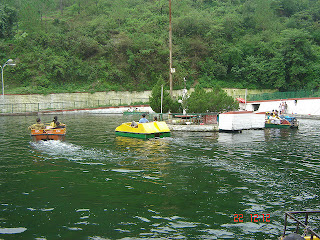
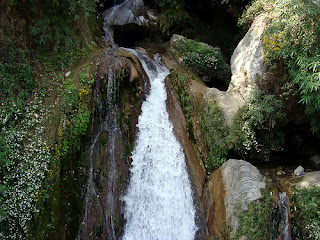
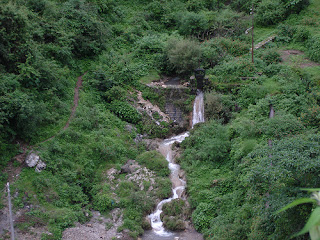
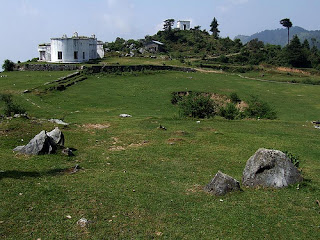
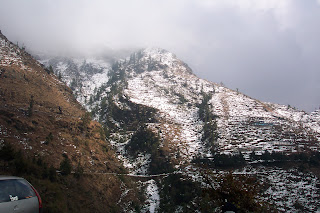
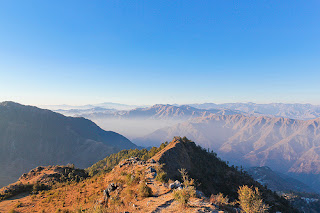

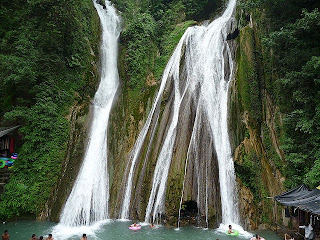





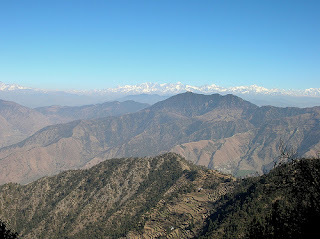



No comments:
Post a Comment